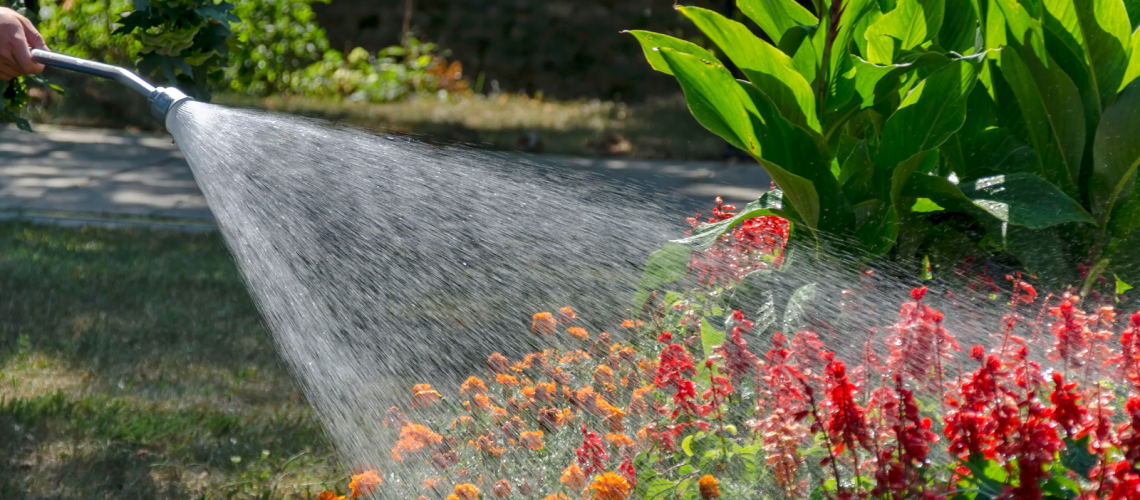How much water does your home landscape really need?
It may be less than you think!
Everyone wants to water smart and only use the amount their landscape truly needs, but exactly how much should you be watering?
Knowing the water needs of your plants in order to thrive is helpful when trying to figure out how much and how often to water. Many plants are happier when soil is allowed to dry out a little bit and often require less water than you think for optimal health. Of course, water needs will vary by season and the amount of water applied will vary by the weather.
There are several methods to getting an average of how much your landscape needs. Each method has pros and cons, and some are more accurate than others. Here are a few easy methods that will help you figure out your outdoor water needs.
All of these water needs assessments are just starting points and the main thing to keep in mind is to monitor your plants and adjust if something isn’t working.
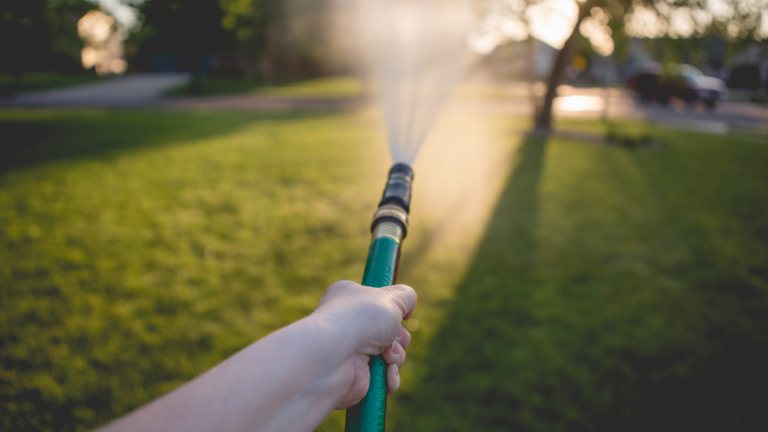
Method 1
Calculate with Evapotranspiration (ET)
This method is based on the SLIDES equation. For more information on the SLIDES system, check out this website and this publication.
To determine water needs of an entire landscape, it is first necessary to break it down by plant type. Plants that have similar water needs should be grouped together and if you have an automatic sprinkler system, all the plants within each zone should have similar water needs.
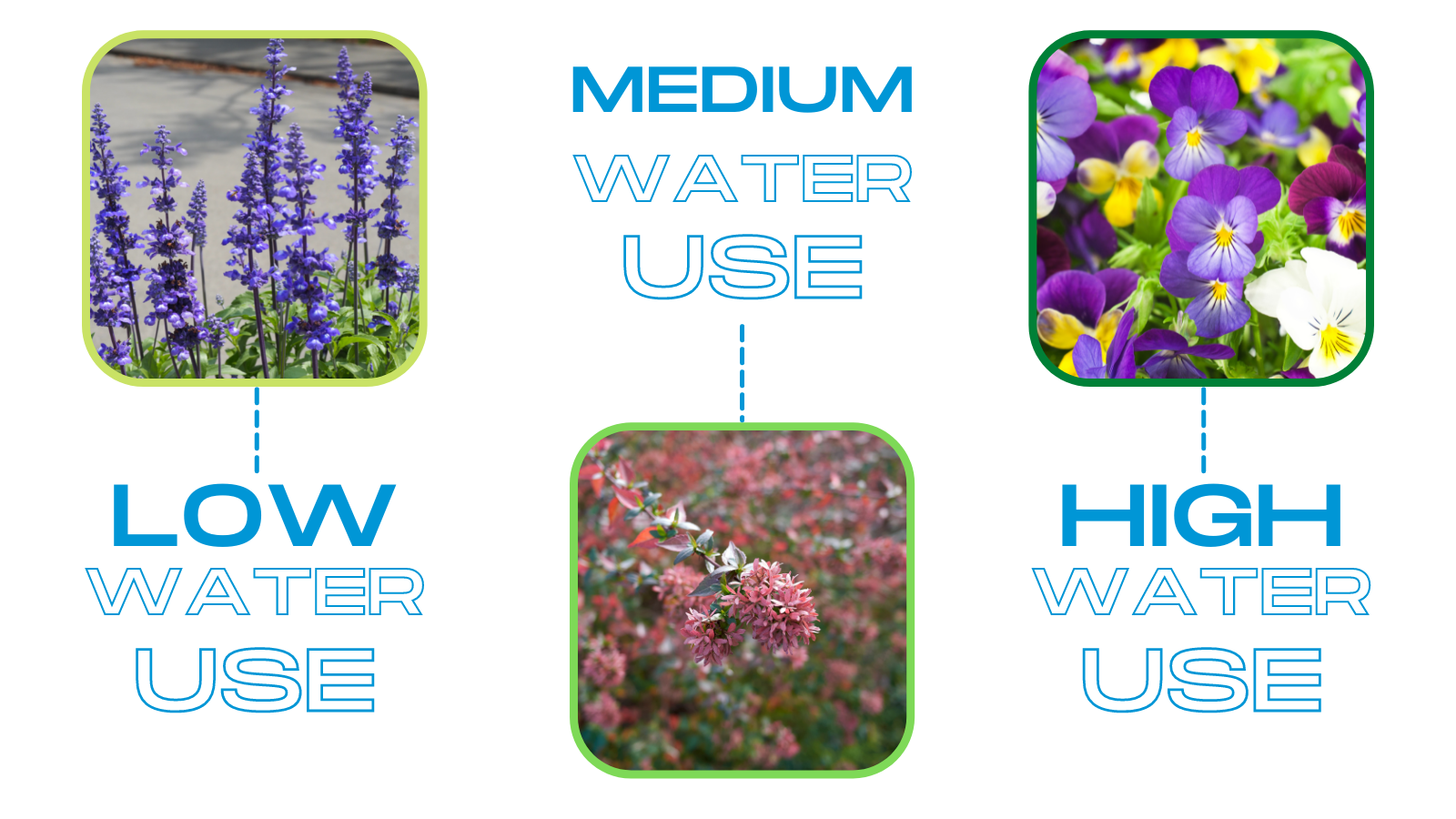
For each plant type, water needs can be calculated based on the plant factor that corresponds to the water use category and local ET or Evapotranspiration rate. This is the rate at which water is evaporated from the ground and transpired through plants. Plants need different amounts of ET replenished back to them in the form of rain or irrigation, and that is what determines their water needs.
1.Find your plant type for each sprinkler zone and corresponding plant factor.
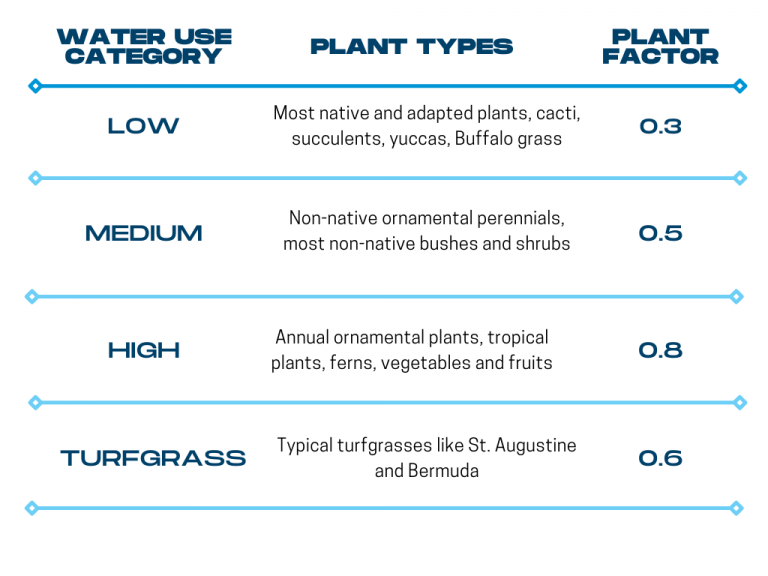
2. Find your local evapotranspiration.
For the ET rate, you can use an average for the month, an average per week, or find your location’s actual weekly ET. A monthly average ET is usually sufficient but will need more adjustment based on the weather.
You can find actual daily and weekly ET rates from weather stations throughout North Texas from the Texas ET Network.
Average monthly ET in inches
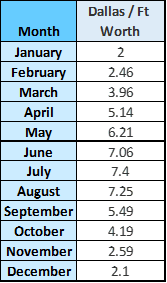
3.Calculate baseline watering rate.
To calculate your base watering rate, you just multiply the ET by your plant factor.

For example, for a native plant bed in a typical month of August in North Texas, this would be my equation:
7.25 x 0.3 = 2.175 inches per month
Dividing by about 4 weeks a month, that makes about half an inch per week.
Don’t forget that if you are looking at weekly ETs, that is your weekly watering rate, if you are looking at monthly ETs, that is the amount to water throughout the whole month. You can divide the monthly amount by 4 to get an average weekly baseline watering amount. Watering amounts should be different for each zone or bed that you have different plant types in.
4. Subtract rain.
Lastly, you want to subtract any recent rainfall from that baseline amount. If you are watering weekly, you can look up the amount of rain that fell in your location the previous week and subtract that. If you prefer to use a monthly average or weekly average, you can do the same as the ET and find average rainfall for your location. Just remember to adjust for actual weather when using averages!

Using the example from earlier,
2.175 inches/month baseline – 2.10 inches/month rain = 0.075 inches per month to water
In this case and on average, the amount of water needed for native plants is negligible.
Just for a comparison, here is the same calculation done for a St. Augustine grass lawn, a very common turfgrass in North Texas yards.
7.25 x 0.6 = 4.35 inches per month baseline
5.8 inches/month baseline – 2.10 inches/month rain = 2.25 inches a month to water
For a large lawn, that comes out to quite a bit of water in a month.
Average monthly rainfall in inches
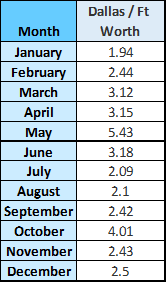
Method 2
Adjust from Average ET Calculation
If you prefer to not calculate anything yourself and just use averages, these charts are for you! Keep in mind that you will definitely have to adjust these amounts based on actual recent or forecasted weather.
Here is a chart based on an average year. These are estimated watering rates in inches based on average monthly ET for Tarrant County, Texas.
Average Monthly Irrigation Amounts for North Texas in Inches
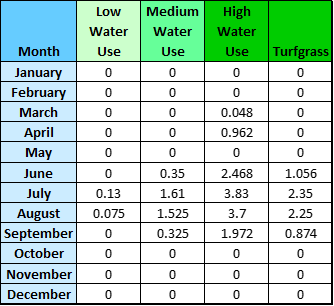
Average Weekly Irrigation Amounts for North Texas in Inches
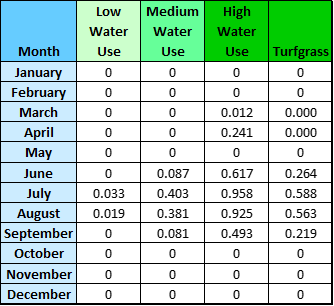
Note that in the table above, watering rates are organized monthly but the rates are how much to water per week.
Method 3
General Advice
Turf Grass Lawns
For turf grass lawns, the easiest thing to do is sign up for free weekly watering advice. It is custom to your location and looks at local rainfall and ET data to offer the best advice for common North Texas lawns.
In the heat of the summer with no recent rainfall:
- St. Augustine – 1 inch per week
- Bermuda – 0.5-0.75 inches per week
- Buffalo Grass – 0.25-0.5 inches per week
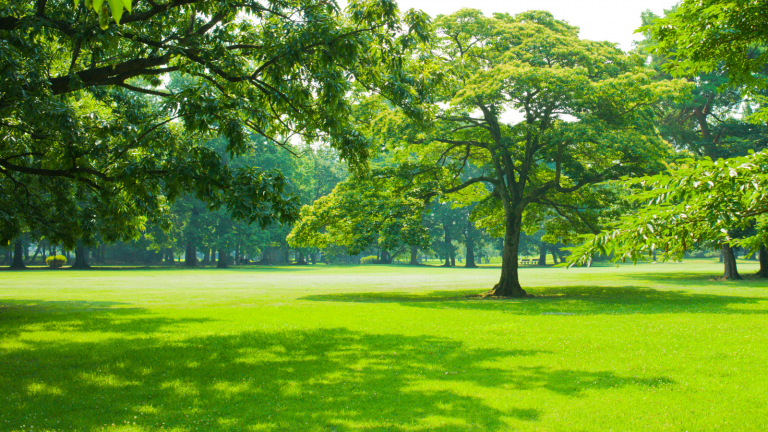
Ornamental Beds
This all depends on what type of plants you have growing, but in general 1-2 inches per week in the summer, then reduced in the fall and winter.
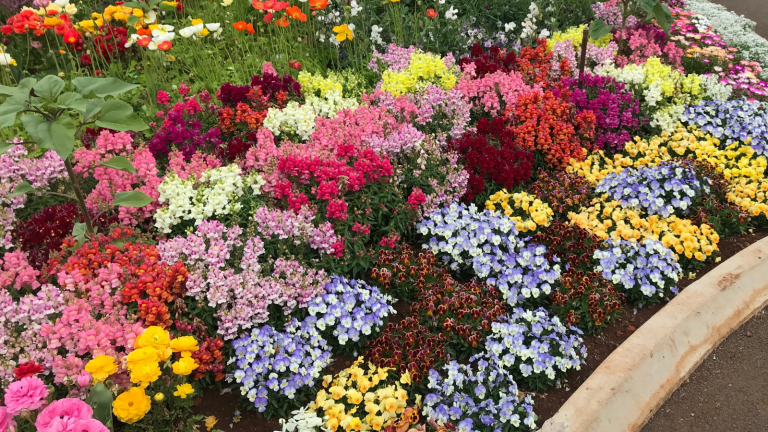
Native Plants
Native plants often need little to no supplemental irrigation at all, but can be watered based on preference. After establishment, it is ok to not water your native plants at all except if you see stress, in times of hot and dry weather, or the soil is completely dry. If they are watered, they will produce more and larger flowers and foliage. For this, these plants only need about 0.5 inches every 2 weeks, even during the summer. This might be increased some depending on the type of native plant or preference for more flowers, but be careful. Many native plants will quickly die if left with wet roots.
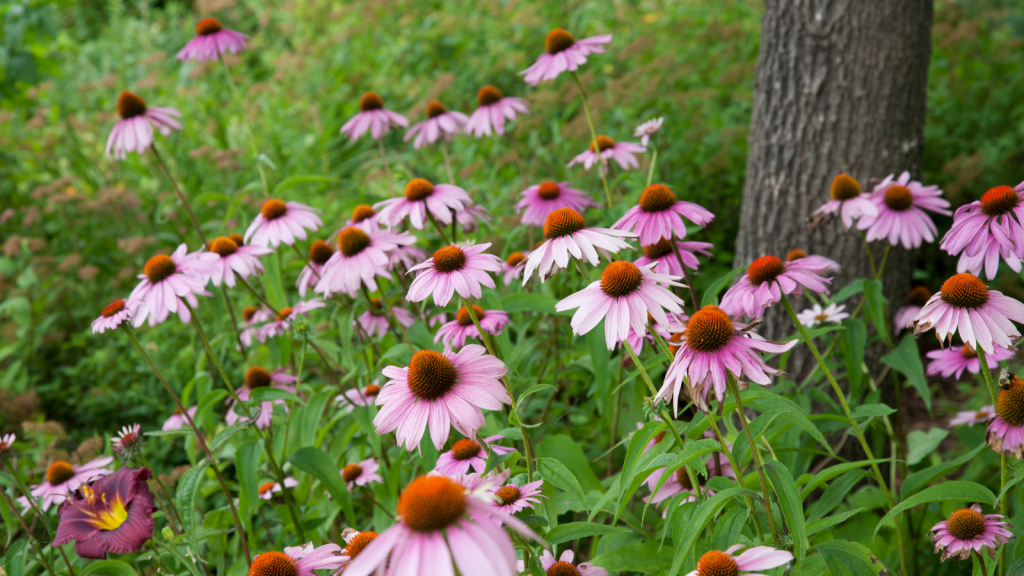
Other Watering Advice
When thinking about watering amounts for any type of plant, make sure to take into account if there is any shade over it. If it is underneath a tree or in shade for a good amount of the day, you will probably only need to water half of what is recommended, if that.
Also keep an eye out for moist areas of your yard. If there are certain areas that stay wet longer, decrease the recommendation.
Many irrigation controllers have a seasonal adjustment feature. You can use that by setting it to the maximum watering amount in a year, usually in the middle of summer, then reduce the percentage in all the other months.
Once you go to set your sprinkler zones to this advice, make sure you are keeping these basic rules in mind:
- Only water on 2 days a week or less – Most cities have certain days you are allowed to water based on your address. Make sure those guidelines are being followed.
- Never water between the hours of 10 am and 6 pm – Most of it will just evaporate and it can scorch plant leaves.
- Cycle and soak – If you have clay soils like much of North Texas, water in slow to soak in. Split watering times into multiple cycles to make sure it all gets a chance to soak in.
- Make sure your sprinkler system is in good repair – Fix any leaky or misaligned heads to get maximum efficiency.
- Always turn off your system for rain and freeze events – Make sure you have a rain and freeze sensor just in case.
For all of these methods, the most important landscaping tip is to plant plants with alike water needs together and in the same zone.
Now that you know how much water your landscape truly needs, compare that to what you have been watering and adjust accordingly.
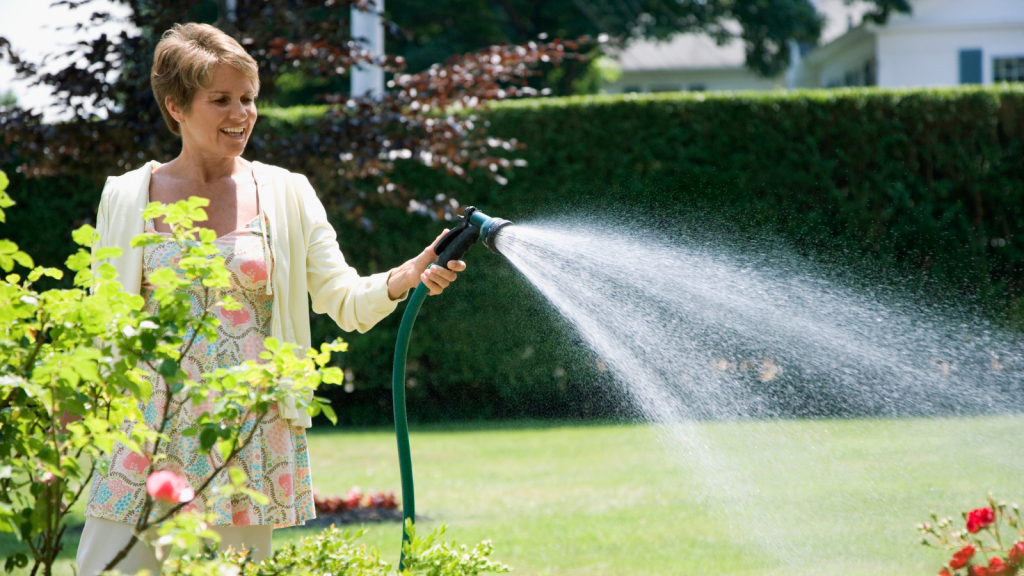
Heather Bass is a Water Conservation Coordinator at Tarrant Regional Water District who focuses on outdoor water conservation and sustainable landscaping through ecologically sound principles. You can reach Heather at heather.bass@trwd.com or 817-720-4432.

